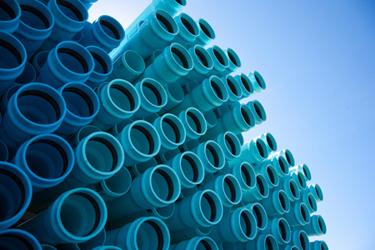Building Trust In The Age Of Plastic Plumbing
By Nasrin Kashefi

There is momentum for the use of plastic pipe in water distribution systems, but also some uncertainty. Standards have been put in place, however, to alleviate concerns.
Though plastic pipes have been used in water systems in the U.S. since the 1950s, the public commonly views them as a new material for drinking water systems where lead piping and other materials were previously used. Since the 1950s, knowledge about plastic pipes has only increased, and they are now becoming a key product in the water industry, as seen in their selection for projects being completed through the Bipartisan Infrastructure Law. As this material becomes more popular because of its durability and cost-effectiveness, manufacturers must be prepared to stand behind the safety of their products.
A Guide To Health And Safety Standards
The best way manufacturers can build trust in their products is to emphasize the health and safety standards in place and educate the public on them. These standards create streamlined requirements for various materials and products and provide a benchmark product quality level. The NSF standards process is accredited by the American National Standards Institute (ANSI) and Standards Council of Canada (SCC), developing standards through a public process with industry representatives, certification bodies, testing labs, regulatory officials, and end users. These standards are recognized worldwide and have been adopted in numerous countries, further adding to their credibility within the industry as mainstay standards of quality and safety. Standards that plastic pipes are tested to include:
- NSF/ANSI/CAN 61: Drinking Water System Components — Health Effects1
A common question about plastic pipes is how they impact public health. First published in 1988, NSF/ANSI/CAN 61 establishes minimum health effects for any products that come into contact with drinking water. Products that fall under its scope include, but are not limited to, faucets, plumbing devices, tanks, gaskets, coatings, pipes, hoses, and fittings. - NSF/ANSI 14: Plastic Piping System Components and Related Materials2
NSF/ANSI 14 specifically covers quality aspects of plastic piping system components and related materials for potable and non-potable water. Established in the 1960s, product applications include drinking water, sewer piping, oil pipelines, cooling, gas, electrical conduits, and drain piping, just to name a few. These products are highly regulated through this standard as they undergo qualification testing, monitoring, facility inspections, and quality control testing. NSF/ANSI 14 also references NSF/ANSI/CAN 61 for potable water piping systems. - NSF Guideline 533: Ingredients Used in Drinking Water Products3
NSF Guideline 533 was launched at the beginning of 2023 as a solution for water product manufacturers to pre-qualify ingredients in the event of a product redesign, manufacturer backorder, or other delaying event. This new guideline increases the product formulation flexibility for certified products to use certified ingredients, allowing them to maintain their certification without having to undergo retesting, helping to affirm the product’s safety.
End users can be assured that, as plastic pipes increase in popularity, 49 of the 50 states and 11 of 13 Canadian provinces or territories have regulations that require drinking water distribution products to comply with the NSF/ANSI/CAN 61 standard. Additionally, both U.S. major plumbing codes require certification to NSF/ ANSI 14 for plastic piping products. This shows how end users are protected when selecting these products for use in drinking water systems.
Verify Safety With Third-Party Certification
To help manufacturers create and maintain transparency for consumer trust, third-party certification bodies like NSF certify plastic pipes to these trusted industry standards. This type of testing is not new. Plastic pipe products have been third-party tested and certified to NSF/ANSI/CAN 61 in NSF labs, which have been testing for these materials in our drinking water systems since 1989. Third-party verification plays an integral role in building consumer confidence as it is an unbiased way to verify product claims, rather than having consumers rely only on manufacturers’ claims. This adds another layer of credibility in proving a product’s compliance to the standard’s requirements.
In conclusion, manufacturers of plastic pipes must be prepared for questions about these materials, considering that in mainstream media they are still considered “new.” Manufacturers can leverage the facts when educating the public about the safety of plastic pipes, emphasizing the trusted standards and regulations in place for these materials. Further, manufacturers can earn certification for their products to demonstrate that they meet the standard requirements and increase their competitive advantage in the marketplace. Through these tactics, manufacturers can be a guiding voice in helping consumers feel more confident in the drinking water system materials utilized in public and building water systems.
References:
- https://www.nsf.org/knowledge-library/nsf-ansi-standard-61-drinking-watersystem-components-health-effects
- https://nsfinternational.widen.net/view/pdf/xbo6dx6ngl/PP_NSF-61_NSF-14_Insert_LT_EN_LPP1356.pdf?t.download=true&u=dy8alp&use=ovrb6%22
- https://www.nsf.org/knowledge-library/533-ingredients-drinking-waterproducts
About The Author
 Nasrin Kashefi is the director of the Global Plastics and Plumbing Certification Division at NSF and has over 30 years of experience. She holds a bachelor of arts in public relations and a master of arts in interpersonal and organizational communication from Eastern Michigan University. Kashefi serves on several industry and technical committees representing NSF, including the Plastic Pipe Institute (PPI) Hydrostatic Stress Board, Plastics Pipe and Fitting Association, PVC Pipe Association, ASTM F17 Committee, and NSF Standard 14. Kashefi can be reached at Kashefi@nsf.org.
Nasrin Kashefi is the director of the Global Plastics and Plumbing Certification Division at NSF and has over 30 years of experience. She holds a bachelor of arts in public relations and a master of arts in interpersonal and organizational communication from Eastern Michigan University. Kashefi serves on several industry and technical committees representing NSF, including the Plastic Pipe Institute (PPI) Hydrostatic Stress Board, Plastics Pipe and Fitting Association, PVC Pipe Association, ASTM F17 Committee, and NSF Standard 14. Kashefi can be reached at Kashefi@nsf.org.
